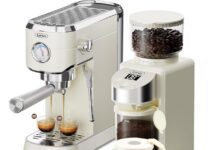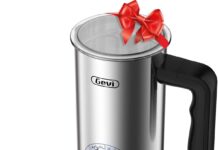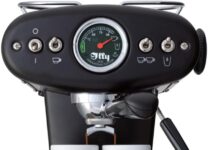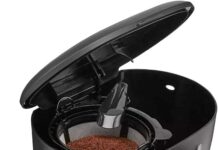Coffee makers and coffee pots are both essential appliances in any caffeine enthusiast’s kitchen, but have you ever wondered what sets them apart? While the terms may often be used interchangeably, there are actually distinct differences between the two. A coffee pot refers specifically to the container used to hold and serve coffee, typically made of glass or ceramic and equipped with a handle and spout. On the other hand, a coffee maker encompasses the entire device responsible for brewing the delectable beverage, including the heating element, water reservoir, and filter system. So, next time you’re shopping for your morning pick-me-up, keep in mind the nuances between a coffee maker and a coffee pot!
Coffee Maker
Definition
A coffee maker is a kitchen appliance that is designed to brew coffee. It is a convenient and efficient tool that allows individuals to easily make their favorite coffee beverages at home. Coffee makers are available in various shapes and sizes, offering different brewing methods to cater to diverse preferences.
Function
The primary function of a coffee maker is to heat water and extract the flavor from coffee grounds, producing a delicious cup of coffee. The brewing process typically involves adding water to a reservoir, adding coffee grounds to a filter, and then starting the machine. The water is heated, passing through the filter and extracting the coffee’s essence. The finished coffee then drips into a carafe or mug, ready to be enjoyed.
Types
There are several types of coffee makers available in the market today. The most common types include drip coffee makers, single-serve coffee makers, espresso machines, French press coffee makers, and pour-over coffee makers. Each type offers unique features and brewing methods, allowing users to customize their coffee experience according to their preferences.
Features
Coffee makers come with a wide range of features to enhance the brewing process and provide convenience to users. Some common features include programmable timers, temperature control, strength settings, and automatic shut-off. Additionally, advanced coffee makers may offer built-in grinders, milk frothers, and customizable brewing profiles to cater to different tastes and preferences.
Advantages
Coffee makers offer numerous advantages that make them a popular choice for coffee enthusiasts. Firstly, they provide convenience by allowing users to brew coffee at home without the need for manual brewing methods. Coffee makers also offer consistency, ensuring that each cup of coffee is brewed with precision. Furthermore, they save time, particularly in the morning when individuals are rushing to start their day. With programmable timers, users can wake up to the aroma of freshly brewed coffee.
Disadvantages
Despite their many advantages, coffee makers also have a few disadvantages to consider. One limitation is that they often require regular cleaning and maintenance. Depending on the type of coffee maker, it may be necessary to clean the machine’s various parts, such as the carafe, filter, and water reservoir. Additionally, some coffee lovers argue that the flavor of coffee made in a coffee maker may not be as rich or robust as coffee brewed using manual methods.
Coffee Pot
Definition
A coffee pot, often referred to as a coffee carafe or coffee decanter, is a container used for serving brewed coffee. It is typically made of glass or stainless steel and comes with a handle and a spout for easy pouring. Coffee pots are an essential accessory for coffee makers as they hold the brewed coffee until it is ready to be enjoyed.
Function
The primary function of a coffee pot is to hold and serve the brewed coffee. Once the brewing process is complete, the coffee is transferred from the coffee maker into the coffee pot. The pot keeps the coffee hot and prevents it from losing its flavor. It also provides a convenient way to pour the coffee into cups and mugs without any spills.
Types
Coffee pots come in various sizes and designs to suit different needs and preferences. Some coffee pots have a traditional shape with a large handle and a narrow spout, while others may feature a more modern design with thermal insulation to keep the coffee hot for extended periods. Additionally, coffee pots may vary in capacity, with options for serving small households or larger groups.
Features
Coffee pots are designed to be functional and user-friendly. They commonly feature an ergonomic handle and a well-designed spout for comfortable and precise pouring. Many coffee pots also include heat-resistant materials to prevent burns while handling hot beverages. Some advanced coffee pots may have thermal insulation or double-walled construction to keep the coffee hot for longer periods, ensuring an enjoyable drinking experience.
Advantages
Coffee pots offer several advantages that complement the functionality of coffee makers. Firstly, they provide a convenient way to serve coffee to multiple individuals without the need for continuous brewing. Coffee pots also help maintain the temperature of the brewed coffee, ensuring that it remains hot and flavorful during gatherings or extended periods. Additionally, coffee pots are often dishwasher-safe, making cleaning and maintenance effortless.
Disadvantages
While coffee pots have numerous advantages, they also have a few drawbacks to consider. One limitation is that coffee pots are mainly designed for serving coffee and do not contribute to the brewing process. Therefore, they require a coffee maker or another brewing method to produce the coffee initially. Additionally, coffee pots are susceptible to breakage if mishandled or dropped, so extra care must be taken to ensure longevity.





































